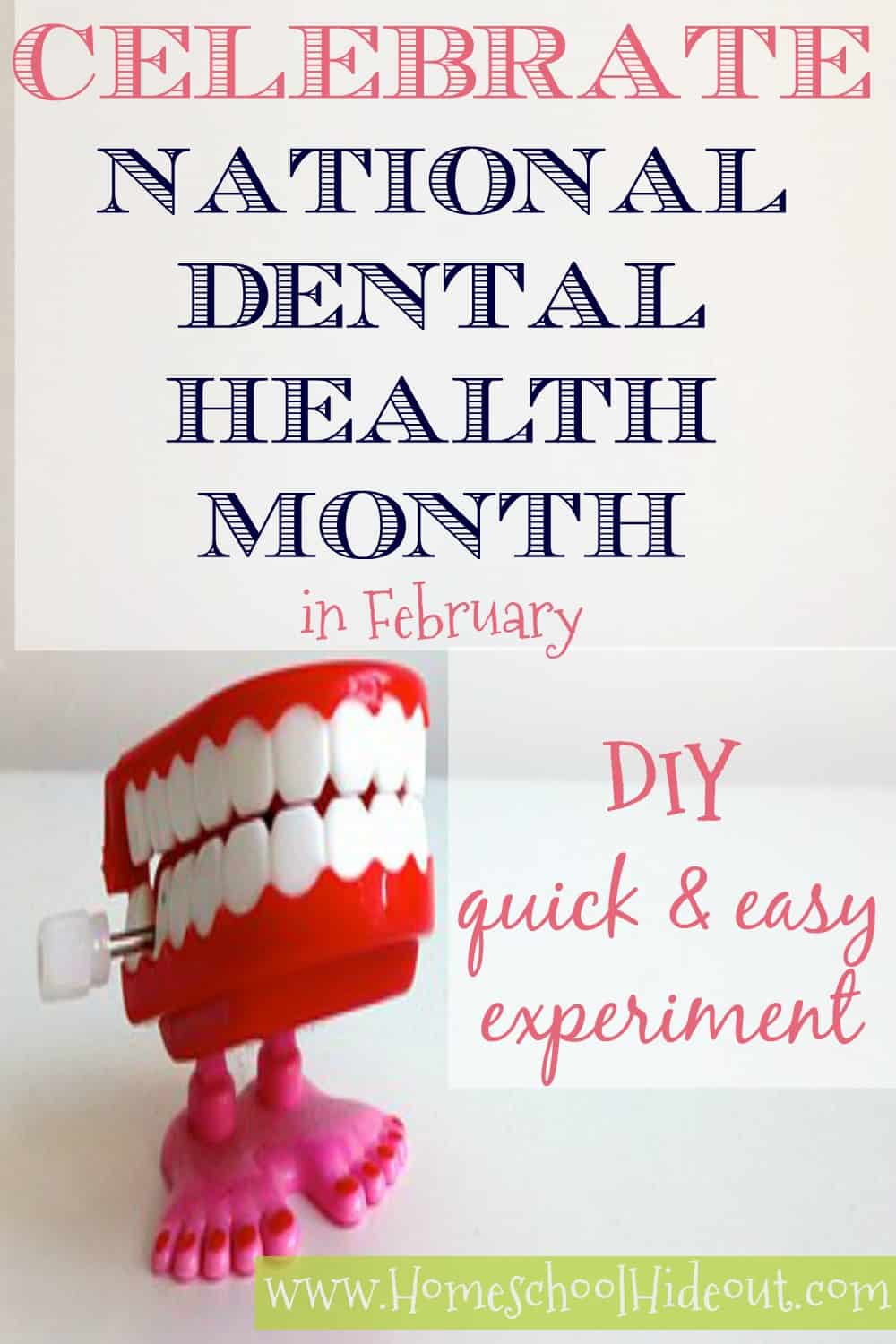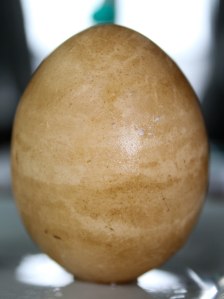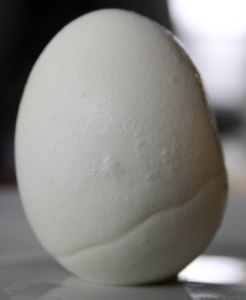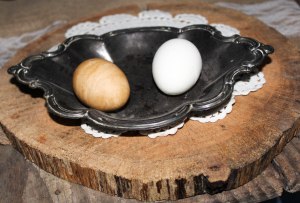Pop Quiz:
Which animal has a mouth the size of a pinhead yet has approximately 25,000 taste buds on its tongue?
The answer?
A snail!
Bull sharks have about 50 rows of teeth, arranged in rows that work like a conveyor belt, growing a new tooth within a day of losing one and moving older teeth forward to replace it.
Dogs rarely get cavities because their saliva prevents demineralization.
Yep, animals have some pretty amazing teeth. But so do humans.
February is National Dental Health Month and what better way to learn about oral health care than with a fun experiment?

National Dental Health Month Experiment
For this experiment, you will need:
2 hard boiled eggs
1 glass of dark colored soda pop
1 glass of white vinegar
We added one hard boiled egg to a glass of Pepsi and one to vinegar. We let them sit overnight.
We talked about how the eggshell is compared to our enamel and the yolk is compared to our tooth’s pulp.
The parts of a tooth act as a house, trying to protect the pulp.
The next morning, we observed what had happened and how these eggs reacted, as our teeth do.
The egg that was left in Pepsi was completely stained. We discussed how this is what happens when you drink dark sodas or teas. Our teeth turn a different shade, due to the many unhealthy ingredients in sodas.
Our next egg, which had been left in vinegar overnight was even more interesting.
The vinegar had literally ate away the eggshell, just as sugar would eat away at your teeth’s enamel.
Did you know that enamel is the hardest part of our body, yet it doesn’t ever regrow?
That means if you break or chip the enamel on your tooth, you are out of luck, unless you just so happen to be a beaver. 🙂
The texture of the eggshell was very strange. It was still technically there, it was just very soft and almost flaky, for a lack of better words.
Here is a short explanation of what is happening, borrowed from Exploritorium.edu :
When you submerge an egg in vinegar, the shell dissolves. Vinegar contains acetic acid, which breaks apart the solid calcium carbonate crystals that make up the eggshell into their calcium and carbonate parts. The calcium ions float free (calcium ions are atoms that are missing electrons), while the carbonate goes to make carbon dioxide—the bubbles that you see.











